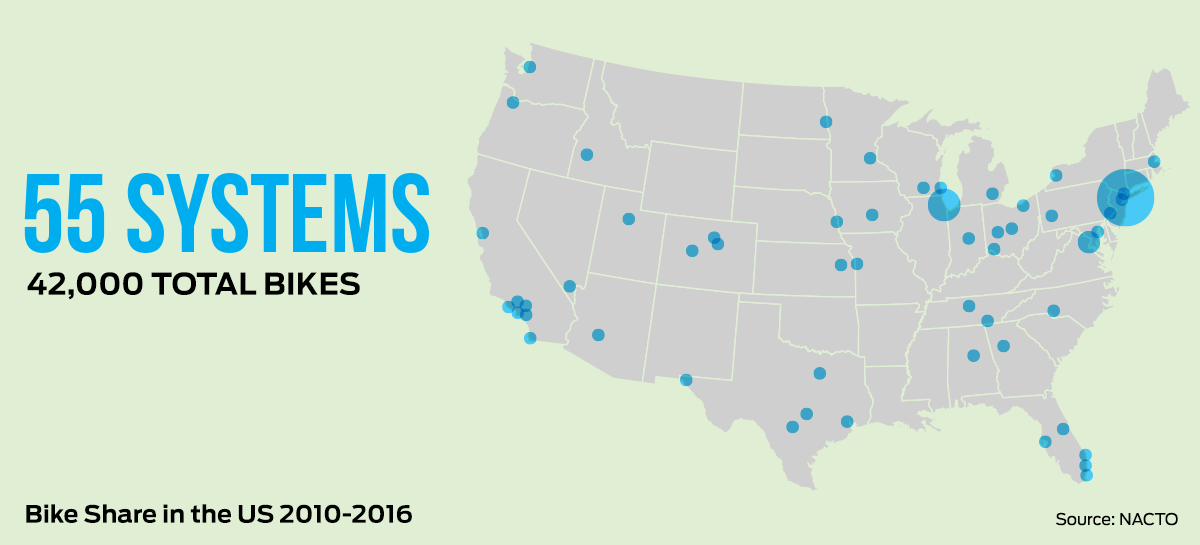History of Bikeshare
05/18/2022by Peter R., Guest Blogger
Where did bikeshare start? You probably won’t be surprised.
Along with a legal red-light district, public pot smoking and canals, Amsterdam is known as a city where cyclists rule. It has not always been so. Amsterdam leaders got serious about reducing auto congestion by supporting cycling in the 1970s. Since then, the city has become an elaborate network of cycle-paths and lanes, so safe and comfortable that even toddlers and elderly people use bikes as the easiest mode of transport.
So, you probably won’t be surprised to learn that in 1965, Amsterdam was home to what is now considered the first bikeshare system. Luud Schimmelpennink – considered the father of bikeshare – started Witte Fietsen ("White Bikes"). He collected bicycles, painted them white and simply left them on the streets for public use. With no locks or payment system, however, many bicycles were quickly damaged and stolen. Witte Fietsen seemed like a failure but it laid the foundation for bikeshare.

Though it took 20 years to revive, the concept was not forgotten. The next major bikeshare, called Copenhagen City Bikes, eventually secured public and private funding which allowed it to flourish. Bycykler København featured fixed docks where riders deposited a coin to unlock a bike. The coin was returned when the bike was returned to a dock.
It was only in the 2000s, and particularly within the last decade, that bikeshare would catch on. The transport mode grew from just 13 in 2004 to 855 in 2014.
Washington D.C was the first US city to launch a bikeshare system: Capitol Bikes in 2010. It continues to be one of the most popular systems in the nation and has attracted several other scooter and e-bike players.

Bikesharing in Hawaii
Hawaii B-Cycle was Hawaii's first introduction to modern bikeshare in 2011. It was a three-year pilot project limited to Kailua Oahu. The two-station and 12-bike system was a partnership between the State Department of Health, Momentum Multisport, and B-Cycle.
A year later, the Hawaii Clean Energy Initiative & the State Department of Health identified bikeshare in Urban Honolulu as a key strategy and a Bikeshare Working Group was formed with the goal of bringing a public, large-scale bikeshare system to Honolulu.
Biki was launched in 2017 it has been one of the most heavily used systems per-capita in the country. We face the same challenges as other cities in the early transition to more bicycle use: vandalism, funding challenges, some lingering antipathy from motorists. But, in just 5 short years, Biki has become fully integrated into the city and is regularly used by more than 100,000 annual riders. Bikeshare makes cycling more accessible and more affordable for residents and visitors, and gets more people on bikes. And when more people are on bikes, there is more demand for safe places to ride. In just 5 short years the city has improved and extended existing bikeways, installed bike infrastructure on Pensacola, Ward and Alakea, and planned for the design of several more complete streets projects.
Will Honolulu ever be an Amsterdam or Copenhagen or even Paris for bikeshare and other personal or “micro” mobility? Only time will tell, but we think we're headed in the right direction.



